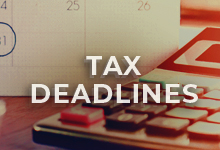
“Think of giving not as a duty but as a privilege.” (John D. Rockefeller Jr.)
Most businesses want to show appreciation to their employees at the end of a long year’s work, and the “Season of Giving” is the ideal time. A thoughtful gift will make any employee feel more recognised and appreciated, and this will improve morale and enhance perceptions about the company and could even increase employee satisfaction and loyalty.
SARS, however, considers almost any kind of gift to employees as a taxable fringe benefit, and therefore companies need to check with their accountants before giving, to ensure the tax implications are fully understood and taken into consideration.
What does SARS regard as gifts?
Any asset, commodity, goods or property of any nature provided by the employer to the employee at no cost, or a cost which is less than the market value of that item, is regarded as a taxable benefit in the hands of the employee, as per Paragraph 2(a) of the Seventh Schedule to the Income Tax Act.
This means that any gift that can be regarded as an asset will be subject to employees’ tax – whether physical or intangible, and regardless of the value, because there is also no minimum value below which gifts from an employer are exempt from tax.
Furthermore, the gift will be taxable even if the gift is given to an employee’s family member, such as a partner or a child.
Also remember that the onus of proof lies with your company should SARS challenge the tax treatment of any gifts to your employees.
Tax on common employee gifts
Tangible gifts, such as watches or electronic devices, will be taxed in the hands of the employee based on its market value, or on the cost to the employer.
Intangible gifts such as flights, bus tickets or accommodation are also considered as taxable benefits to the employee and the cost to the employer is the taxable amount.
Gift cards and vouchers are among the most popular gifts for employees, but beware! These are taxed at the same rate as if it the employee received cash. In some cases, it may be better to gift cash instead of a card or voucher that would limit the employee to a single retailer or outlet.
Similarly, bonusses are taxed at the same rate as other remuneration. This means that the amount of the bonus will be added to an employee’s annual salary when the rate of tax payable for the year is determined. The danger here is that the bonus amount might push some employees into a higher tax bracket.
How must the tax be deducted?
Depending on the nature of the gift, employers will need to determine the cash equivalent, or the market value, or the cost to the company to calculate the employee tax that must be deducted.
This can be quite complex, for example, the value of a benefit where accommodation is provided depends on whether the company owns the property or rents it, as well as whether or not the employee pays towards the accommodation.
The taxable amount calculated must then be reflected as a fringe benefit on the employee’s payslip, and PAYE must be determined and deducted. The benefit must also be declared on the employee’s IRP5/IT3(a) certificate.
Some exceptions?
There may be some possible exceptions, for example, if a gift to an employee does not involve any cost to the employer or where the employee gifts are used for business purposes.
An end-of-year function – whether a lunch celebrating the year’s achievements, or a team-building experience with snacks and refreshments, or a Festive Season office party with employees and their partners – is also a great way to treat your team with a delicious meal and complimentary drinks in a fun and social setting. The food and drinks will be tax-deductible expenses, regarded as a non-taxable occasional meal.
Paid time off work may also be an option that does not have tax implications for the employee.
An employer could also make a donation on an employee’s behalf as a gift. If an employer agrees to process a donation to a S18A-approved organisation through its payroll, such a donation can reduce the employee’s PAYE liability.
Professional advice is vital!
Whichever way your company decides to gift your employees, check with your accountant first to ensure it is both tax compliant and tax efficient.



